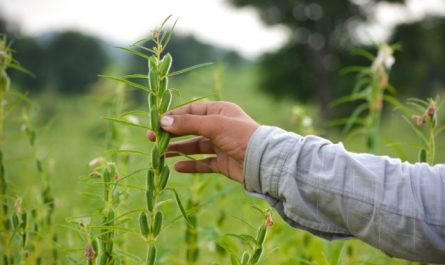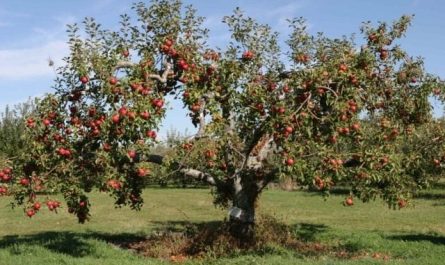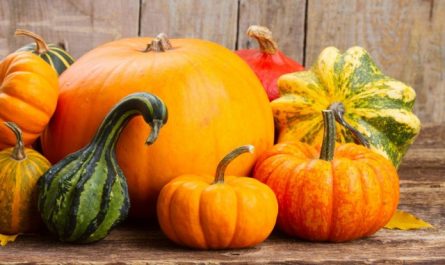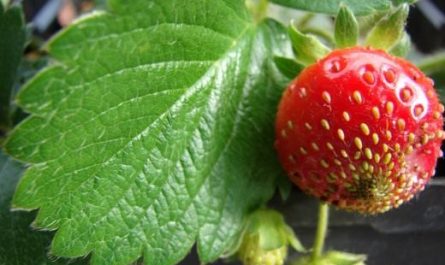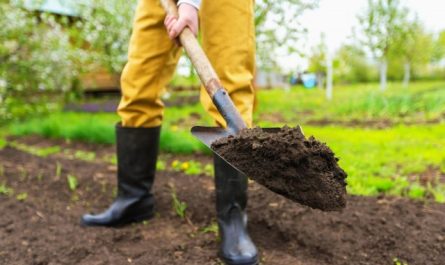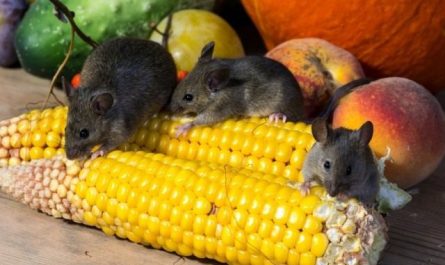If at the end of the season you have unplanted fruit tree seedlings, perennial divisions and other planting material on hand, do not despair. There are many techniques and methods that allow you to keep late purchases and remaining seedlings healthy until planting in the spring. In a trench or outside the soil, such emergency wintering in most cases will not require much effort and expense. To protect plants, you just need to carefully consider the preservation method and choose the most suitable option for your plants.

When things go wrong…
Plants need about 4-6 weeks with a soil temperature of 3 degrees or higher to take root. This is why perennials and seedlings with open roots need to be planted before the third ten days of October. Seedlings with a closed root system can continue to be planted for several more weeks, while the soil condition allows for work. Conifers generally prefer winter, late planting. But sometimes everything does not go according to plan.
Whatever the reason for not having time to plant the plants in the fall, you should never immediately consider the plants doomed to die. Even if you did not have time to plant the seedlings of herbaceous perennials at the end of the season, you can still try to save them until spring. And the bulbs and tubers are completely “accustomed” to such wintering.
The main thing is not to delay too much and not to allow the plants to remain with bare roots, in the light, in the warmth and for too long. The sooner the preparation measures are taken and the sooner the planting material gets into the right storage conditions, the higher the chance of preserving the seedlings and divisions until spring planting.

What tree and bush seedlings can be dug in and when?
Due to climate change, many are forced to abandon the most reliable method of sheltering – snow. After all, constant temperature fluctuations and little snow leave snowdrifts that lie until spring in few places. Simple storage of plants in pits dug in the snow to ground level, under a hill of substrate, lutrasil and a thick layer of thrown snow, has to be replaced by trenches or storage in piles.
Digging in is the main and easiest way to preserve all fruit trees and berry bushes: apple trees, pears, currants, etc. But ornamental plants are also dug in no less successfully (sometimes even annuals are sent to the trench for spring cuttings, although this method is mainly used for vines and heat-loving shrubs). You can put seedlings with open roots and in containers in the trench.
If there are small, fragile, very weak seedlings or grapes, honeysuckle and other vines need to be dug in until spring, it is better to plant them in pots in loose soil before digging in. As a rule, plants in pots and with bare roots are dug in separately, although the process differs only in a few points.
Before storing, you need to prepare the plants – clean deciduous species from all leaves, and inspect the roots of seedlings with an open root system, removing damaged parts. Before digging, plants need to be “refreshed” – immersed in cold water (if possible – entirely) for at least a couple of hours, focusing on the condition of the roots and branches. Container and potted plants are watered immediately before storing.
The digging (in terms of timing) can be carried out until the soil freezes. The key to success is the right choice of location. Any area protected from wind and flooding is perfect. Traditionally, trenches are dug on an elevated or level, dry place without the risk of flooding or high groundwater, for example, on a free bed in the vegetable garden or a flower bed for summer flowers near the southern wall of the house.

Prikop technology
There are several simple rules for implementing a trench:
- Pits for a pair of plants or trenches for a larger number of seedlings are dug from east to west, to a depth of 50 cm (it is possible according to the size of the pot or seedling, adding 20-30 cm to the length of the roots). The width and length of the trenches are determined by the size and number of seedlings.
- It is more convenient to dig a trench facing north, throwing loose soil onto the northern side of the trench. This will significantly simplify the backfilling process, and it is easier to maintain the desired shape. If you are digging in seedlings with bare roots and trees, it is better to make the northern “edge” of the trench as steep as possible (at a right angle), and the southern one – gentle (at an incline of at least 45 degrees).
- If the soil is too dense, you need to mix sand and peat into it, trying to get a light, loose texture that will allow you not to damage the plants when digging them up in the spring.
The seedlings in pots are placed at a slight slope, close to each other, filling the space between the containers with soil, first to the height of the pots. But seedlings with open roots are laid along the slope in trenches with the rhizome leading to the northern slope, leaving 10-15 cm between the plants. It is better to carefully straighten the roots, and if possible, fill them with sand or peat, pine needles or cover them with spruce branches.
Cover the plants with soil gradually: lightly cover, water, then fill with soil to a level of 20 cm above the roots. If you dig in the plants before steady frosts, you can do additional watering for each layer, but usually the soil is simply tamped down to eliminate voids.
The final shelter is created by piling up a small mound or pile over the trench after stable negative temperatures have set in. Traditionally, dug-in seedlings are covered by ⅔ of their height, and container plants – with the top. Mulching the surface from the root side is welcome. On severe frosty days, it is better to additionally protect the above-ground part with spruce branches, snow or hilling. It is not worth covering seedlings with film, because the risk of buds awakening during thaws and damping off is high.
To protect against rodents, you can use nets, thorny branches of rose hips and other bushes, repellents or baits.
In spring, do not delay removing the top layers of cover so that the plants do not rot. Excess snow, spruce branches or mulch should be removed already at the end of March. The soil is removed as it thaws.
How to preserve fruit seedlings without digging them in?
The seedlings can be stored in a basement or cellar (or another dark, dry, cool place with a temperature of 0 to 3 degrees Celsius) until spring. It is easier if the plants were bought in containers, with a closed root system. They are simply installed in a basement or cellar, taken out onto a frost-free balcony, or stored in a refrigerator, wrapped in paper or non-woven materials to protect from light.
Seedlings with bare roots are placed at an angle, leaning against one of the walls, in boxes; non-stone fruit species can also be packed in separate plastic bags with several holes for air exchange. The roots should not be “bare”: they are sprinkled with wet sawdust, peat, sand, ash, vermiculite, sphagnum.

Digging in and storing coniferous plants
All coniferous crops require a special approach. Most plants can be planted even in winter, provided that the site is prepared in advance and there is a supply of soil. But if there is no opportunity to plant seedlings, they can be preserved in two ways:
- They are dug into holes the size of the container, installed evenly and covered with soil with a little hilling. The above-ground part is wrapped in non-woven materials to protect from the sun.
- Store in a cool place, cellar or basement, until spring, slightly moistening the soil.
What to do with unplanted herbaceous plants?
Herbaceous perennials are not the best candidates for storage out of soil, but you can try to save them until spring.
The rhizomes of irises, daylilies, bergenia, hostas and other perennials with thickened roots are stored in the same way as tubers and bulbs.
Perennials with fibrous and thin roots – geraniums, phloxes, heucheras, delphiniums, tiarella, echinacea, primroses, marsh irises and others – cannot be preserved without a substrate. Divisions in containers are better preserved, but rhizomes can be planted in a frost-free greenhouse. If you don’t have one, plant them in peat or substrate in separate pots or common boxes and transfer to a basement, cellar or any cold, with a temperature of 2 to 5 degrees, ventilated, dry and dark room. Only evergreen plants should be exposed to light. Several waterings during the winter will prevent the roots from drying out.
How to preserve unplanted bulbous corms until spring?
Paper or special plastic perforated bags, small cardboard boxes in which tulips, daffodils, lilies, onions, daylilies, hostas, bergenia, irises and other plants can be filled with wet peat or sawdust, sand or sphagnum, will successfully preserve them until spring, provided the temperatures are correct.
Plants that are not planted in time should overwinter in a cool place, at a temperature of 2 to 5 degrees, in a dark, ventilated place and in dry conditions. Higher temperatures will lead to premature germination. Sawdust or peat should be kept slightly damp.
If the sprouts on bulbs, tubers or rhizomes grow actively (up to 8-10 cm), in order to save the plants, they will need to be planted in pots and taken out into bright light. If you are not interested in forcing for rooms, then at low temperatures and in the soil, the plants can be kept until spring, and then carefully transferred to holes in the desired place in the garden.

Dear Readers, The same advice will help in the spring, if you got the seedlings long before the beginning of the real, not the calendar spring. After all, the new sales season opens in March, and in the middle zone, the first purchases need to be somehow stored until the soil thaws and the warm weather arrives. Plants with awakened buds need the same conditions as “dormant” ones, but with one important exception – such seedlings are placed in bright light, not in a dark place.
